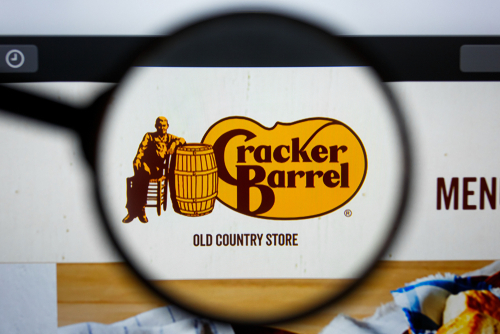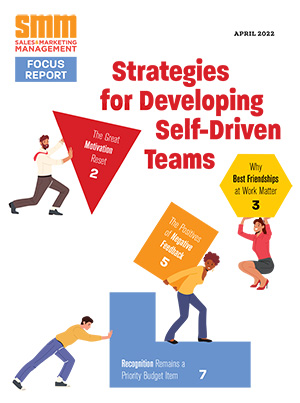Earlier this year, Cracker Barrel tried to modernize its visual identity. The restaurant chain unveiled a sleek new logo and contemporary design language, then watched as customers revolted. Within weeks, they reversed course, returning to their familiar country store aesthetic amid intense backlash.
For B2C and B2B marketers, this isn’t just another consumer brand stumble worth a quick LinkedIn post. It’s a warning signal about how quickly even established brands can alienate their core audience when they skip fundamental steps when examining their brand. In B2B markets, where relationships take years to build, sales cycles are longer and competitors are always circling, the margin for error is considerably thinner.
Know Your Flywheel
Behind Cracker Barrel’s rebrand lies a critical miss: Your brand draws its energy from a core identity, not just aesthetics. When Cadillac reinvented itself from “grandpa’s retirement car” to a “challenger brand for ambitious achievers” in the early 2000s, they reframed their identity around performance, culture and ambition. Cadillac’s key insight was luxury isn’t about having arrived; it’s about still striving. Their identity became the aggressive styling lines that are still part of their DNA. Their marketing became unapologetically bold and reflected American ideas and culture. The Escalade became an icon, appearing in shows like “The Sopranos” and “Entourage.”
The most effective marketers understand that a core insight rooted with existing and future customers must drive the rebrand. It can’t just be aesthetics, but something customers can feel. Cadillac didn’t abandon the past. It amplified its core identity around American boldness. This kind of core insight must guide the decision-making from the earliest strategic conversations, well before any creative work begins.
CMOs today function not just as storytellers, but also as translators. They take product capabilities and company ambitions, then transform them into language that resonates with existing and new customer needs and desires.
Brand Is Human – Don’t Erase It
Cracker Barrel’s reversal highlights a crucial principle: Customers form emotional attachments to familiar touchpoints, even ones that might seem outdated to internal teams. In the age of AI, humanity matters more than ever. The chain forgot that their rustic, traditional visual identity humanized the brand and was part of what made customers feel at home.
B2B companies make similar mistakes when they move down the product-led growth path without understanding the value customers and prospects derive from building relationships. A project management software company might streamline their onboarding, but accidentally remove a human touchpoint that solidifies the prospect’s trust in their decision. A founder may have tremendous pride in a product and want to highlight every capability on the website, but forget that emotion drives the 90% of the vendor decision process.
Progress and automation doesn’t require abandoning human connection. Instead, it means evolving carefully, with a clear understanding of what truly needs to change and what should be preserved.
Smart evolution builds on existing strengths rather than starting from scratch. Customers need time to adjust to change, and they need to see how new approaches serve their interests better than previous ones. Companies that rush this process often find themselves backtracking, as Cracker Barrel did.
Skip the Sexy Stuff – Get Into the Grit
Cracker Barrel focused on the visual rebrand – the logo, the color palette, the new aesthetic. But they likely overlooked the operational reality: Their workers weren’t prepared to explain the changes, their restaurant atmosphere didn’t match the modern branding, and their core service experience remained unchanged. A brand refresh can’t succeed if the underlying business isn’t prepared to support it.
Great marketing starts in the most unglamorous places: operations, fulfillment processes and customer service workflows. Rebrands don’t exist only in design files and marketing materials – they live in customer service scripts, employee training programs and every system that touches the customer experience. While it’s tempting to begin with high-visibility elements like website redesigns and press announcements, these surface changes mean little if underlying delivery mechanisms aren’t solid.
Often, this step may reveal underlying issues with the rebrand. Imagine launching a “customer-first” rebrand while your support team still takes 48 hours to respond to tickets. When your customer success team can’t confidently explain the repositioning, or when your product taxonomy doesn’t align with new promises, you’re creating friction that could torpedo everything.
The most successful brand evolutions happen when marketing leaders work closely with departments across the organization. They ask operational questions others might overlook: How long do implementations actually take? Where do customers typically get stuck? This coordination takes time and intentional effort, but it’s what separates sustainable brand evolution from expensive false starts.
Brand Is a Trust Exercise
Ultimately, brands succeed when they make customers feel understood and confident about the future. Visual modernization matters, but only when it reflects genuine improvements in customer value and business capability.
Cracker Barrel’s quick reversal demonstrates something important: Customer feedback isn’t optional input to be considered after major decisions are made. This feedback is essential intelligence that should guide strategy from the beginning.
Before your next significant brand evolution, use this readiness checklist:
Customer Intelligence:
- Have you surveyed key accounts about what they value most about your current brand?
- Do you understand which brand elements drive genuine loyalty versus internal comfort?
- Can you articulate why changes will serve existing and future customer interests better?
- What’s your core insight driving the project?
Operational Alignment:
- Are your systems ready to deliver on new brand promises?
- Do all customer-facing teams understand the changes and why they matter?
- Have you identified and addressed potential friction points?
Change Management:
Have you preserved the brand touchpoints that customers value most?
- Is your rollout timeline realistic for customer adjustment?
- Do you have feedback mechanisms to course correct quickly?
The most sustainable brand evolution happens when companies balance ambition with genuine readiness, ensuring that every promise they make is backed by their ability to deliver consistently. Skip any of these steps, and you might find yourself explaining to customers why your “improved” offering feels less relevant than what came before.





